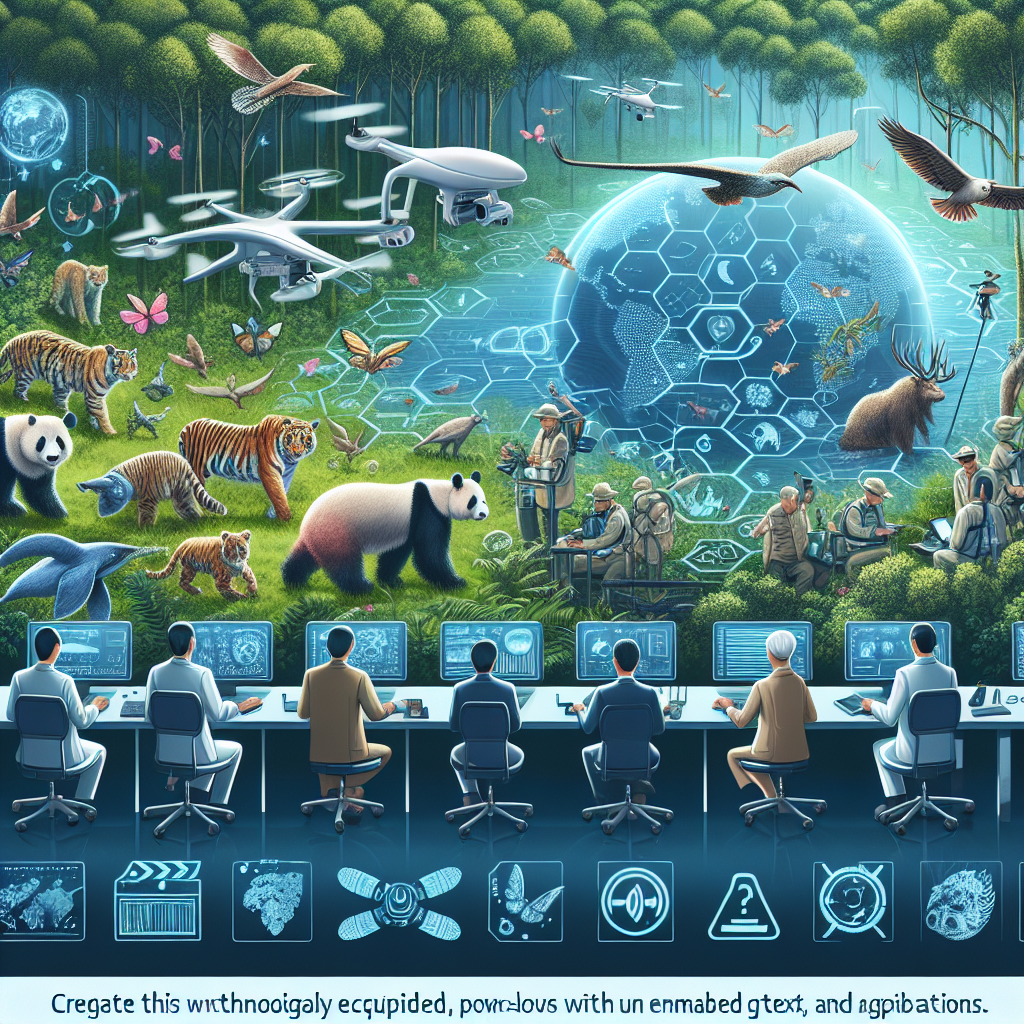AI for Conservation: Protecting Endangered Species with Technology
In recent years, there has been a growing interest in using artificial intelligence (AI) to help protect and conserve endangered species. With the increasing threats to wildlife due to habitat loss, poaching, and climate change, AI has emerged as a powerful tool to aid conservation efforts. From tracking animals in the wild to analyzing data on species populations, AI is revolutionizing the way we approach conservation.
One of the key ways AI is being used in conservation is through the development of smart cameras and drones. These technologies are equipped with AI algorithms that can automatically detect and identify animals in the wild. By using these tools, conservationists are able to monitor wildlife populations more efficiently and accurately than ever before. This real-time data can help identify trends in species populations, track migration patterns, and detect illegal activities such as poaching.
Another area where AI is making a significant impact is in the analysis of large datasets. Conservation organizations are collecting massive amounts of data on wildlife populations, habitat conditions, and climate change impacts. AI algorithms can process and analyze this data at a speed and scale that would be impossible for humans to achieve. By using AI to analyze this data, conservationists can identify patterns and trends that can inform conservation strategies and help prioritize efforts to protect endangered species.
One example of how AI is being used in conservation is in the fight against poaching. Poaching is a major threat to many endangered species, including elephants, rhinos, and tigers. AI-powered tools are being used to monitor wildlife reserves and detect illegal activities in real-time. For example, AI algorithms can analyze data from acoustic sensors to detect the sound of gunshots or the movement of vehicles in protected areas. This information can then be used to alert rangers to the presence of poachers, enabling them to respond quickly and prevent the killing of endangered animals.
AI is also being used to track and monitor individual animals in the wild. By using GPS collars and other tracking devices, conservationists can collect data on the movements and behaviors of endangered species. AI algorithms can analyze this data to provide insights into animal behavior, habitat preferences, and population dynamics. This information can help conservationists better understand the needs of endangered species and develop more effective conservation strategies.
In addition to monitoring wildlife populations, AI is also being used to protect habitats and ecosystems. By analyzing satellite imagery and other remote sensing data, AI algorithms can identify changes in land use, deforestation, and other threats to biodiversity. This information can help conservationists identify areas that are at risk and prioritize conservation efforts to protect these critical habitats.
Overall, AI has the potential to revolutionize conservation efforts and help protect endangered species. By leveraging the power of AI, conservationists can monitor wildlife populations more effectively, analyze data at a scale that was previously impossible, and develop more targeted conservation strategies. As the threats to wildlife continue to grow, AI offers a promising solution to help safeguard the future of endangered species.
FAQs
Q: What is artificial intelligence (AI) and how is it being used in conservation?
A: Artificial intelligence is a branch of computer science that aims to create intelligent machines that can perform tasks that typically require human intelligence. In conservation, AI is being used to monitor wildlife populations, analyze large datasets, track individual animals, and protect habitats and ecosystems.
Q: How does AI help in the fight against poaching?
A: AI-powered tools are being used to monitor wildlife reserves and detect illegal activities such as poaching in real-time. By analyzing data from sensors and cameras, AI algorithms can identify the presence of poachers and alert rangers to respond quickly and prevent the killing of endangered animals.
Q: What are some examples of AI technologies being used in conservation?
A: Some examples of AI technologies being used in conservation include smart cameras and drones that can automatically detect and identify animals in the wild, GPS collars and tracking devices to monitor individual animals, and algorithms that analyze satellite imagery to identify threats to habitats and ecosystems.
Q: How can AI help prioritize conservation efforts?
A: By analyzing large datasets and identifying patterns and trends, AI can help conservationists prioritize efforts to protect endangered species and habitats. AI algorithms can provide insights into population dynamics, habitat preferences, and threats to biodiversity, enabling conservationists to develop more effective conservation strategies.
Q: What are the benefits of using AI in conservation?
A: The benefits of using AI in conservation include more efficient monitoring of wildlife populations, faster analysis of large datasets, better understanding of animal behavior and habitat preferences, and more targeted conservation efforts to protect endangered species. AI has the potential to revolutionize conservation efforts and help safeguard the future of biodiversity.

